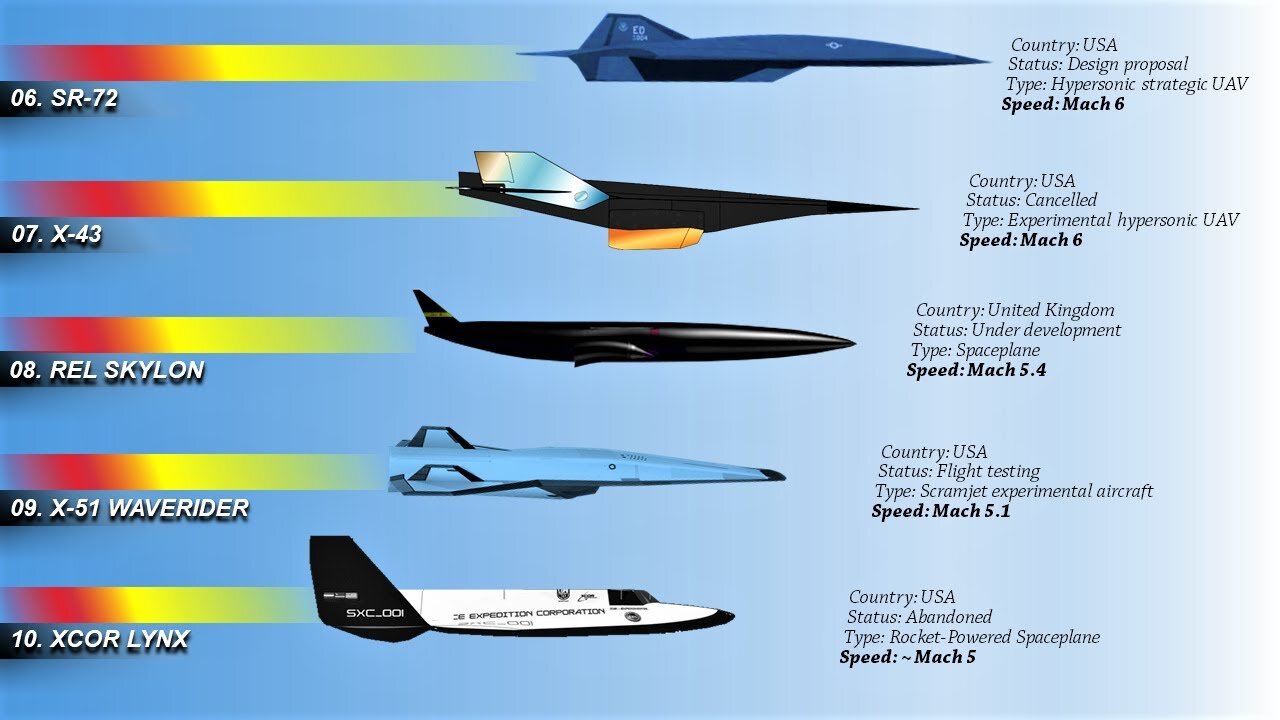Premium Only Content

Hermeus is building the world's fastest commercial aircraft. hypersonic flight lab.
Hypersonic vehicles fly faster than five times the speed of sound and can enable a new class of flight vehicles that enable faster access to space, rapid military response at long range, and faster means of commercial air travel. Traditionally, rocket boosters have been used for hypersonic vehicles. Air-breathing engines have several advantages over rockets. Because the air-breathing hypersonic engine uses oxygen from the atmosphere, it eliminates the need to carry oxygen aboard the aircraft, thereby reducing significant vehicle weight. Furthermore, to produce the same thrust, air-breathing engines require less than one-seventh the propellant that rockets do. Air-breathing vehicles have greater maneuverability because they rely on aerodynamic forces rather than on rocket thrust, which results in higher safety, as flights can be aborted with the vehicle gliding back to Earth.
Two propulsion systems specific to hypersonic flights include ramjet and scramjet. Both concepts rely on high vehicle speed to forcefully compress the incoming air before combustion. A ramjet decelerates the air to subsonic velocities before combustion, while airflow in a scramjet is supersonic throughout the entire engine, which allows the scramjet to operate efficiently at extremely high speeds. Because neither scramjets nor ramjets can operate efficiently when they are traveling below Mach 2 or 3, a third type of propulsion (either a turbojet or a rocket) is required for takeoff. The hypersonic aircraft is a highly integrated system with a high degree of integration between the airframe and the engine, as shown in Fig. 12.20 for a scramjet-powered vehicle.
https://www.sciencedirect.com/topics/engineering/hypersonic-vehicles
-
 4:58
4:58
JUST A HOMELESS MAN
11 months agoLefties losing it: Howard Stern’s ‘bile-filled rant’ about Donald Trump
3291 -

The Quartering
2 hours agoAlex Jones Goes To WAR With Owen Shroyer, Are All Women Terrible?, Woke Backfire Of The Year!
34.4K9 -
 LIVE
LIVE
Awaken With JP
1 hour agoTrans Shooter is the Victim, Vaccines in Trouble, and Greta is Ugly - LIES Ep 106
865 watching -
 LIVE
LIVE
The White House
5 hours agoPresident Trump Makes an Announcement, Sep. 2, 2025
1,854 watching -
 LIVE
LIVE
MattMorseTV
2 hours ago $2.68 earned🔴Trump's Oval Office BOMBSHELL.🔴
1,350 watching -
 18:14
18:14
Real Estate
14 hours agoRising Prices PUSHING AMERICANS OVER THE EDGE
361 -
 1:43:35
1:43:35
Russell Brand
2 hours agoTrump Demands Big Pharma PROVE Covid Vaccine Is Safe – Did Pfizer LIE?! - SF626
131K25 -
 LIVE
LIVE
Due Dissidence
4 hours agoIsrael THREATENS Greta, InfoWars Host QUITS, FL Losing $200M on EMPTYING Alligator Alcatraz
848 watching -
 6:09:56
6:09:56
Law&Crime
6 hours ago $0.41 earnedLIVE: Adelson Matriarch Murder Trial — FL v. Donna Adelson — Day 6
2.98K -
 1:08:04
1:08:04
Sean Unpaved
3 hours agoGridiron Shocks: Arch's Rough Start, Belichick's Tar Heel Tumble, & NFL Week 1 Buzz
20.3K